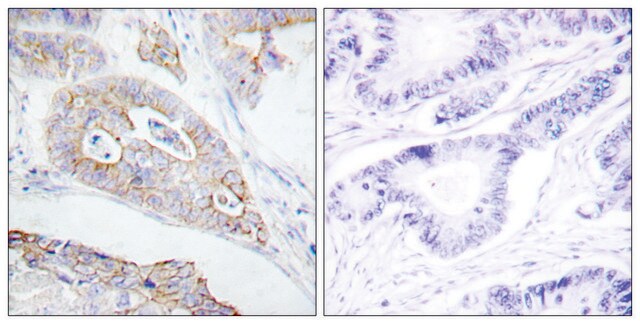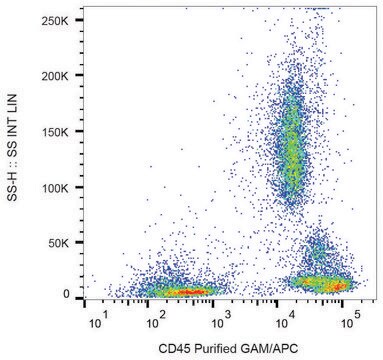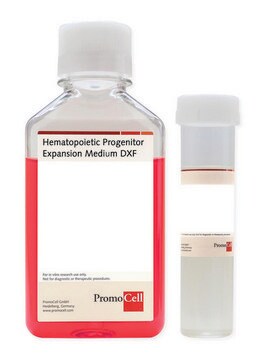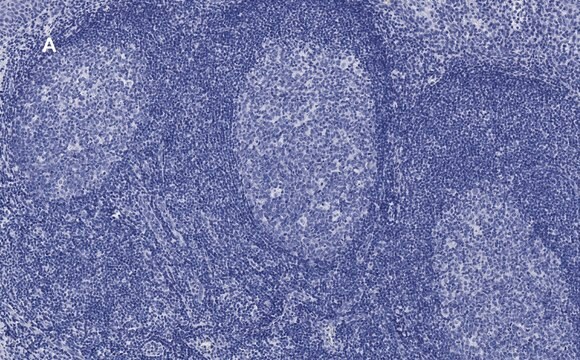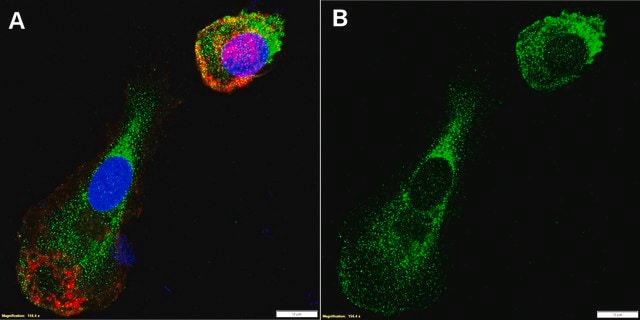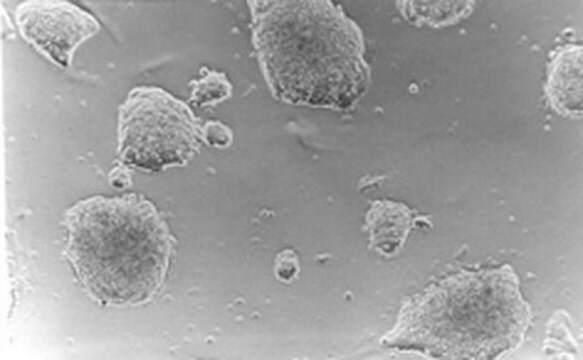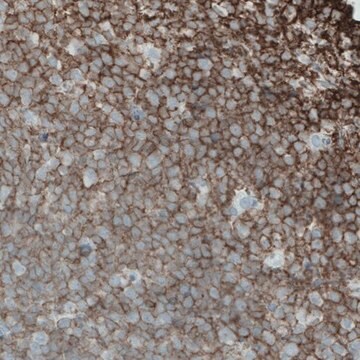SAB4700471
Monoclonal Anti-CD45 antibody produced in mouse
clone MEM-28, purified immunoglobulin, buffered aqueous solution
Synonym(e):
Anti-LCA, Anti-PTPRC
Anmeldenzur Ansicht organisationsspezifischer und vertraglich vereinbarter Preise
Alle Fotos(1)
About This Item
UNSPSC-Code:
12352203
NACRES:
NA.41
Empfohlene Produkte
Biologische Quelle
mouse
Qualitätsniveau
Konjugat
unconjugated
Antikörperform
purified immunoglobulin
Antikörper-Produkttyp
primary antibodies
Klon
MEM-28, monoclonal
Form
buffered aqueous solution
Speziesreaktivität
human
Konzentration
1 mg/mL
Methode(n)
flow cytometry: suitable
Isotyp
IgG1
NCBI-Hinterlegungsnummer
UniProt-Hinterlegungsnummer
Versandbedingung
wet ice
Lagertemp.
2-8°C
Posttranslationale Modifikation Target
unmodified
Angaben zum Gen
human ... PTPRC(5788)
Allgemeine Beschreibung
The antibody MEM-28 reacts with all alternative forms of human CD45 antigen (Leukocyte Common Antigen), a 180-220 kDa single chain type I transmembrane protein expressed at high level on all cells of hematopoietic origin, except erythrocytes and platelets.
Immunogen
Human thymocytes and T lymphocytes
Anwendung
The reagent is designed for Flow Cytometry analysis. Suggested working dilution for Flow Cytometry is 1 μg/mL of sample. Indicated dilution is recommended starting point for use of this product. Working concentrations should be determined by the investigator.
Leistungsmerkmale und Vorteile
Evaluate our antibodies with complete peace of mind. If the antibody does not perform in your application, we will issue a full credit or replacement antibody. Learn more.
Physikalische Form
Solution in phosphate buffered saline, pH 7.4, with 15 mM sodium azide.
Haftungsausschluss
Unless otherwise stated in our catalog or other company documentation accompanying the product(s), our products are intended for research use only and are not to be used for any other purpose, which includes but is not limited to, unauthorized commercial uses, in vitro diagnostic uses, ex vivo or in vivo therapeutic uses or any type of consumption or application to humans or animals.
Sie haben nicht das passende Produkt gefunden?
Probieren Sie unser Produkt-Auswahlhilfe. aus.
Lagerklassenschlüssel
10 - Combustible liquids
Flammpunkt (°F)
Not applicable
Flammpunkt (°C)
Not applicable
Hier finden Sie alle aktuellen Versionen:
Besitzen Sie dieses Produkt bereits?
In der Dokumentenbibliothek finden Sie die Dokumentation zu den Produkten, die Sie kürzlich erworben haben.
Bo Peng et al.
The Journal of neuroscience : the official journal of the Society for Neuroscience, 34(24), 8139-8150 (2014-06-13)
Retinitis pigmentosa (RP) is a photoreceptor-degenerative disease caused by various mutations and is characterized by death of rod photoreceptor cell followed by gradual death of cone photoreceptors. The molecular mechanisms that lead to rod and cone death are not yet
Nanna Siegmann et al.
Cellular physiology and biochemistry : international journal of experimental cellular physiology, biochemistry, and pharmacology, 34(1), 56-70 (2014-07-01)
Inflammation is a major and critical component of the lung pathology in the hereditary disease cystic fibrosis. The molecular mechanisms of chronic inflammation in cystic fibrosis require definition. We used several genetic mouse models to test a role of iNKT
Brian Meehan et al.
Mechanisms of ageing and development, 140, 13-22 (2014-07-30)
Antiangiogenic therapies in cancer exert their effects in the context of age-related comorbidities, which affect the entirety of the vascular system. Among those conditions, the impact of atherosclerosis is especially prevalent, but poorly understood, and not reflected in mouse models
Mohammad Atefi et al.
Clinical cancer research : an official journal of the American Association for Cancer Research, 20(13), 3446-3457 (2014-05-09)
PD-L1 is the main ligand for the immune inhibitory receptor PD-1. This ligand is frequently expressed by melanoma cells. In this study, we investigated whether PD-L1 expression is controlled by melanoma driver mutations and modified by oncogenic signaling inhibition. Expression
S Badrnya et al.
Thrombosis and haemostasis, 112(1), 128-136 (2014-02-28)
Circulating plasma microvesicles (PMVs) and their microRNA content are involved in the development of atherosclerosis and could serve as biomarkers for cardiovascular disease (CVD) progression. However, little is known on how smoking influences the levels of PMVs and microRNA signatures
Global Trade Item Number
| SKU | GTIN |
|---|---|
| SAB4700471-100UG | 4061837016554 |
Unser Team von Wissenschaftlern verfügt über Erfahrung in allen Forschungsbereichen einschließlich Life Science, Materialwissenschaften, chemischer Synthese, Chromatographie, Analytik und vielen mehr..
Setzen Sie sich mit dem technischen Dienst in Verbindung.
